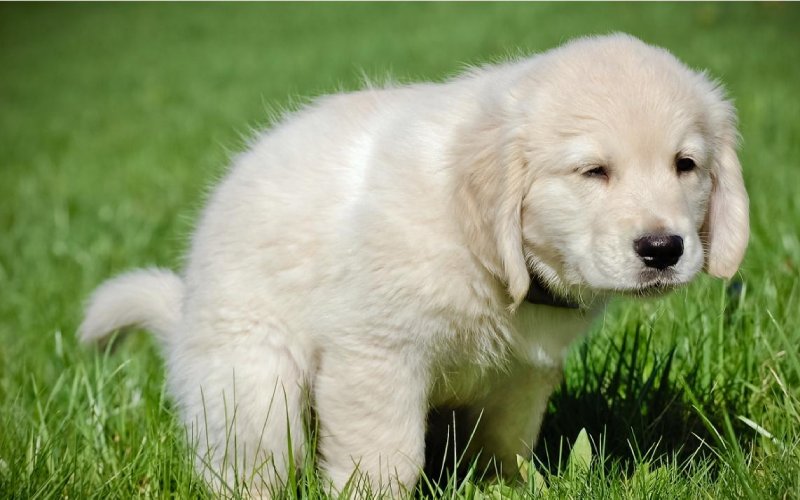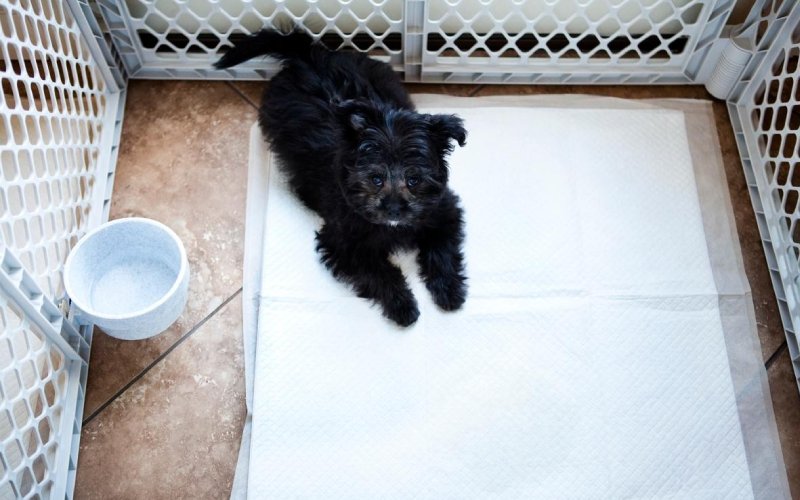Every day, we get a call about potty training at fortlauderdaledogtrainers.com Every dog owner dreams of the day when their furry friend instinctively knows where to go to the bathroom. Potty training, which you might also hear called house training, is more than keeping your floors clean; it’s a basic part of being a good dog owner. Teaching your dog the proper places to relieve themselves makes living together better for everyone. It’s all about mutual understanding, trust, and respect with your pet.
A dog that’s trained well won’t pick up diseases from contaminated places and will be more welcome in social settings, like a friend’s home or the local park.
Let’s dive into the steps involved in potty training your puppy and adult dog.
How Do You Potty Train Puppies
Training puppies to go potty is about patience, staying consistent, and knowing their specific needs. Here’s how you do it:
Importance of a Regular Schedule:
Feeding and Potty Breaks:
Puppies need a regular schedule. This helps them get the right nutrition and also makes it easier to know when they need to go potty. Stick to a feeding timetable and you’ll more likely know when to take them out, cutting down on indoor accidents.
Age and Bladder Control:
Remember, a puppy’s ability to hold it gets better with age. They can usually control their bladder for one hour per month of age. So at three months, they can likely hold it for three hours. But don’t test their limits too much; they still need regular bathroom breaks, especially after eating, playing, or waking up from a nap.ps, are crucial.
Do’s of Potty Training a Puppy
- Taking the Puppy Out Often: It’s clear as day. Going outside often—after eating, playing, or sleeping—really helps cut down on indoor accidents.
- Using Crate Training as an Aid: A crate can feel like a safe spot for your puppy. If you use it the right way, it’s great for potty training. Puppies usually don’t like to make their bed dirty, so a crate works well for this. But keep in mind, that the crate isn’t a prison. It’s got to be a cozy spot where your puppy feels at home.
- Recognizing Signs: Every puppy is different, but they all have some common ways to show they need to go, like sniffing, going in circles, or showing restlessness. If you notice these cues, you’re on your way to smoother training.
- Using Positive Reinforcement: Always cheer on good actions. If your puppy uses the right spot for their business, give them lots of love or a treat. This kind of positive feedback makes sure they know they’re doing the right thing, and they’ll want to keep doing it.
How to Potty Train Adult Dogs
Switching gears to adult dogs, it’s crucial to grasp that, although they may come with some ingrained habits, they can certainly learn proper potty behavior with the correct methods. Here’s a breakdown of what to do and what not to do when potty training an older dog.
Do’s of Potty Training an Adult Dog
- Establish a Regular Schedule: Adult dogs, much like their younger counterparts, thrive on consistency. Feeding them and taking them out for potty breaks at regular times daily sets their internal clock for when to go.
- Restrict Your Dog’s Roaming Area Initially: At the start, it’s smart to confine the area your dog can wander in. This tactic helps prevent them from having accidents in parts of your home you may not visit as often.
- Apply Crate Training Wisely: Crates aren’t just for puppies; they’re incredibly useful for adult dogs, too. For your dog, a crate is a haven and also helps avoid accidents when you can’t be there to watch them.
- Watch for Signals and Reward Appropriately: Pay attention. Your dog might begin to pace or sniff when they need a break. Catching these cues and responding with a quick trip outside is key. And don’t forget—when they succeed, a little celebration with praise or a treat reinforces the good behavior.
Things to Avoid While Potty Training a Puppy or a Dog
Avoiding the Use of Potty Pads as a Primary Method
Potty pads might seem convenient, especially at first or if you live in an apartment, but they’re not the best for teaching. They can mix up your puppy, who might start thinking it’s okay to go anywhere that looks like the pad, and that’s how you get messes where you don’t want them.
Never Punish for Accidents
Look, accidents are part of the deal. But if you punish your puppy for slipping up, it’s not going to end well. They won’t get what they did wrong. Instead, they might start being scared of you or even scared to go potty when you’re around.
Don’t Mix Up Their Schedule
Stick to a routine. If you’re all over the place with feeding or bathroom breaks, you’re just going to make everything tougher and take longer for your puppy to learn what’s expected.
Adult Dogs vs. Puppies: Potty Training Approaches
When it comes to teaching dogs where and when to relieve themselves, there’s a need for patience, dedication, and a steady routine, whether you’re dealing with puppies or adult dogs. Yet, their ages do bring some differences and similarities in training tactics:
Age and Bladder Control
Little puppies, especially the ones under three months old, should go outside hourly or every other hour because they’re still getting the hang of controlling their bladder. Adult dogs, in contrast, have better control and can wait longer between breaks.
Past Training and Habits
Adult dogs might already have some potty training or established habits, which could either help or hinder the process. Puppies, meanwhile, are just starting out and often adapt more easily to new training.
Time to Learn:
Often, an adult dog can pick up potty training within a month or so, while a puppy, dealing with a younger bladder, usually needs a bit more time.
Training Techniques
For Puppies:
- They need to get outside often to prevent accidents.
- Giving them a treat right after they go outside helps them learn.
- A crate is a good tool since puppies avoid soiling their sleep space.
For Adult Dogs:
- The same basic principles apply, but grown dogs might benefit from a stricter schedule.
- If they’ve picked up bad habits, you might have to start training from scratch.
- They could need more time to get used to the idea of a crate if it’s new to them.
Common Challenges and Solutions
Potty training isn’t always a smooth journey. Here are some common challenges faced and their solutions:
| Challenges | Solutions |
| Accidents in the house | Clean the soiled area thoroughly to remove the scent. Puppies and dogs are more likely to soil in areas that smell like urine or feces. |
| Puppy not understanding where to eliminate | Consistently take them to the same spot outside and use specific words or phrases to associate with the action. |
| Puppy eliminating immediately after coming inside | Increase the duration of outdoor breaks and play with them outside after they’ve done their business. |
| Using potty pads inside the house | Avoid using potty pads as they can confuse the dog about where they’re allowed to eliminate. |
| Punishing the dog after an accident | Never use punishment. Instead, focus on positive reinforcement when they do the right thing. |
Wrapping It Up
To sum it all up, teaching your dog the do’s and don’ts of potty training, whether it’s a bouncy puppy or a full-grown pooch, demands a steady hand and a lot of patience. Accept that slip-ups are part of the journey, but with a focused strategy and a bit of grit, you’ll see your companion become potty proficient soon enough. Keep in mind, that each dog has its own personality—techniques that are successful with one may not cut it with another. Commit to the training, and you’ll be rewarded with a well-behaved dog that adds endless happiness to your life.



